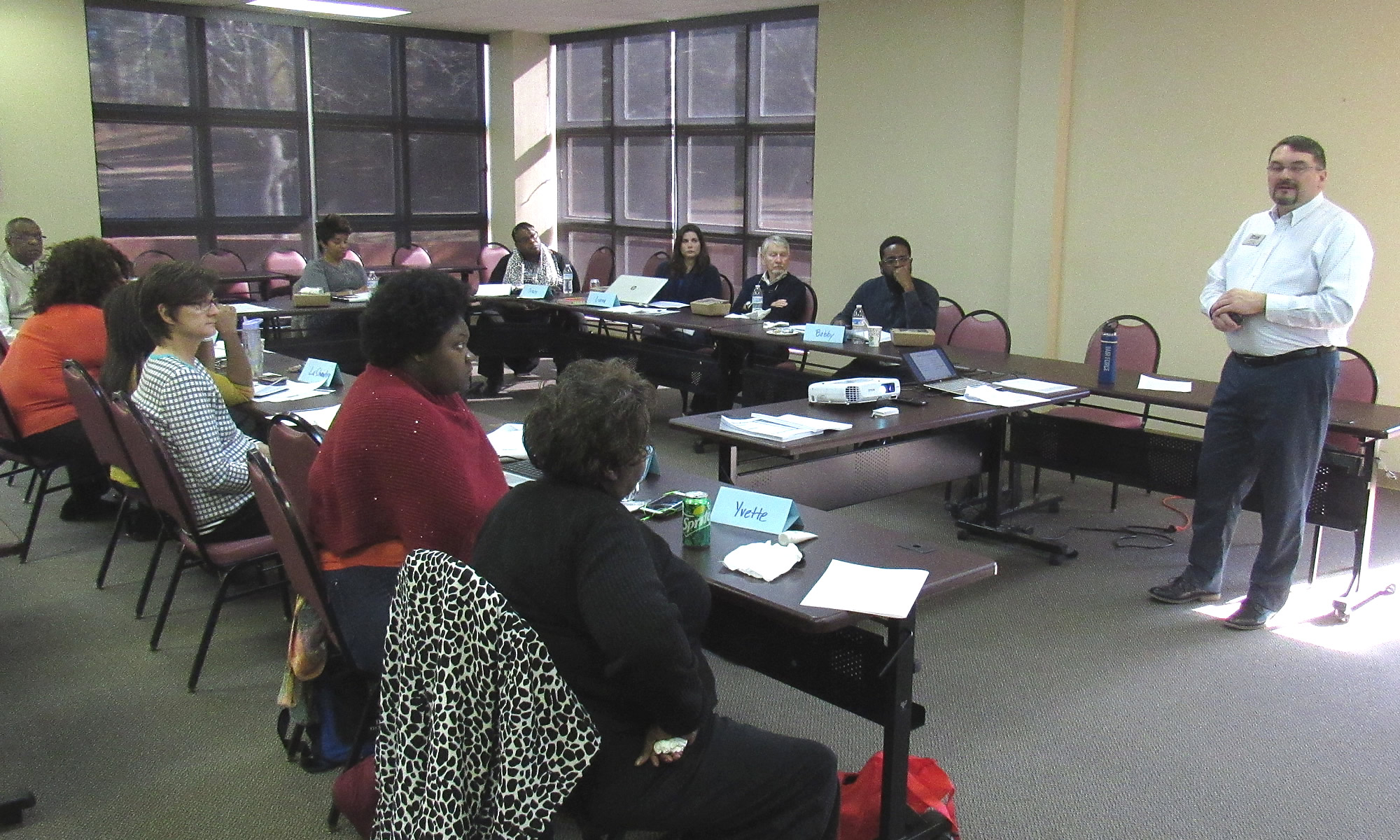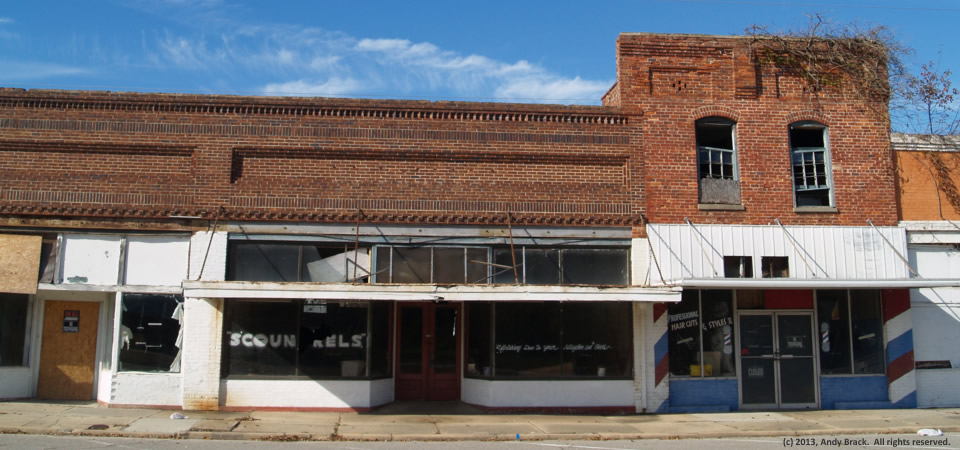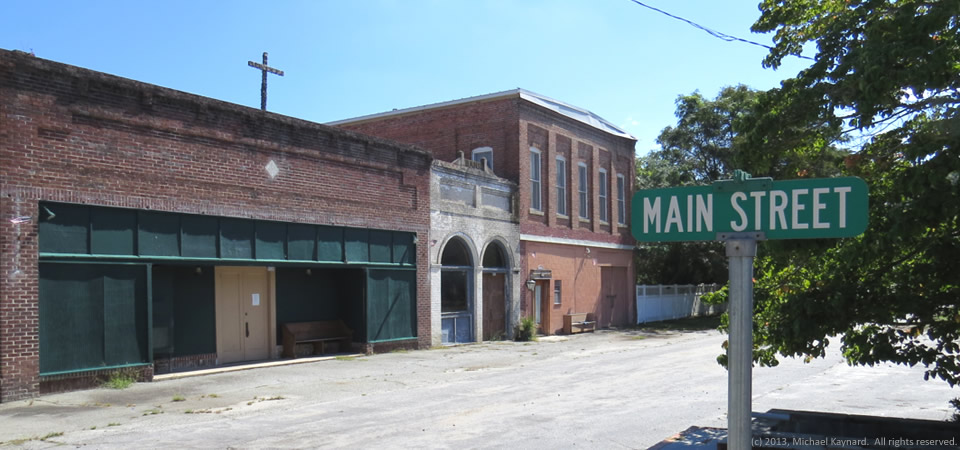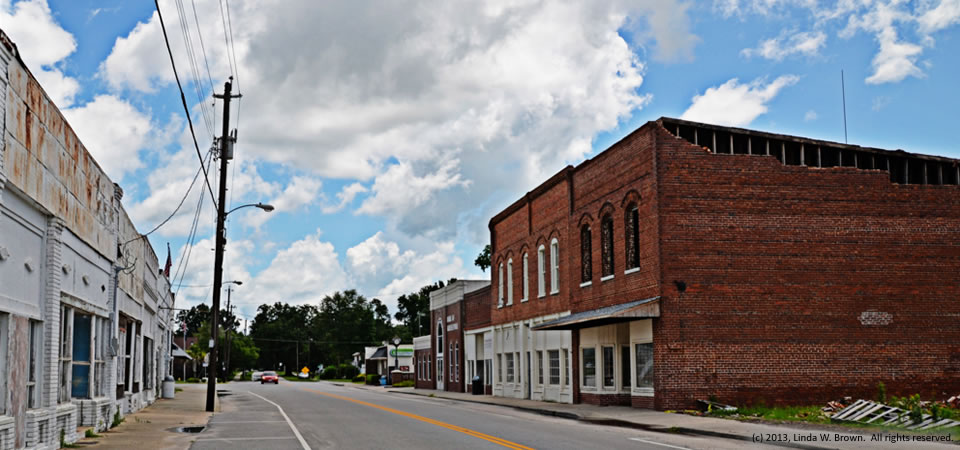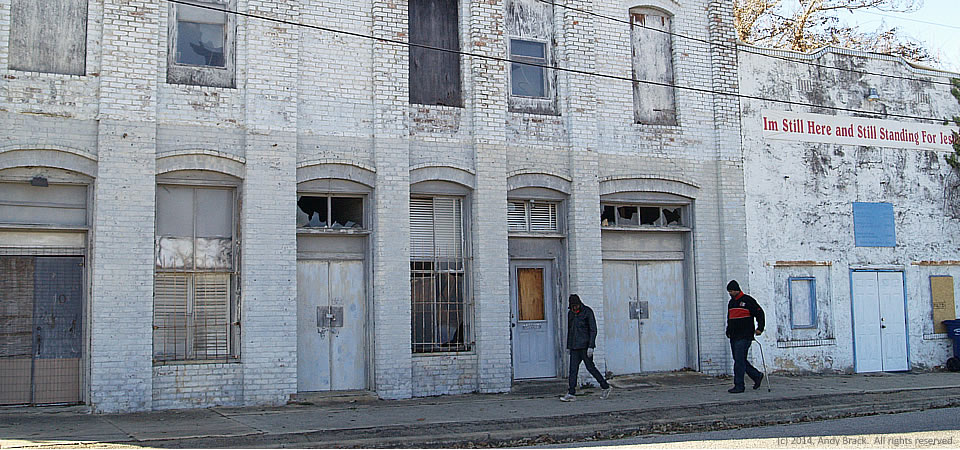
Two guys walk past an empty building on Main Street in North, S.C., on a chilly January day. What caught our attention about the deteriorating grand-looking commercial building was the red sign of the establishment at the right — a church that appeared to be closed. Emblazoned at the top: “Im Still Here and Still Standing For Jesus.”
North, which has an old military air strip outside of the town limits that is still used for military touch-and-go landings for C-17 Globemaster transport jets, seems to be a tired, rural town. The reason: It got its oomph more than 100 years because of the railroad, which isn’t a player these days. [History.]
North, which has a population of about 800, is in Orangeburg County, which is South Carolina’s largest. Some 91,476 people were thought to live in the county in 2012, according to the U.S. Census. Almost two in three residents are black. Some 24.5 percent of residents live below poverty.
- More about North via Wikipedia.
Copyrighted photo was taken Jan. 22, 2014 by Andy Brack. All rights reserved.
